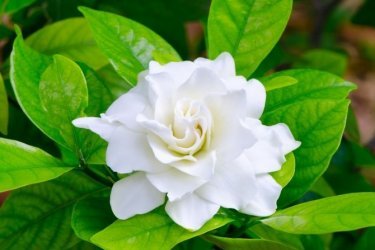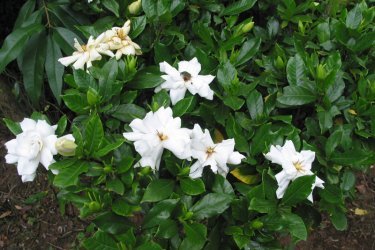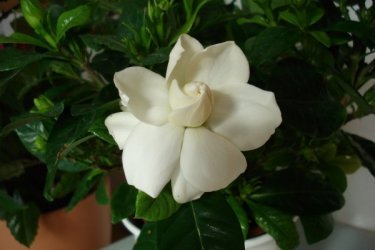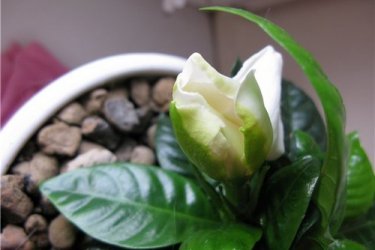Gardenia
Growing gardenia from seeds is quite difficult, but the seedlings obtained this way are strong and well adapted to home conditions.
This is difficult to say about purchased plants: if you want to admire the wonderful flowers, you will need provide the most suitable living conditions and provide proper care.
Before purchasing a gardenia, select a well-lit, draft-free place in advance - it will be needed to place the pot. It is not recommended to move the flower around the room; this will ultimately lead to the buds dropping and the leaves falling off.
The ideal option is to place the gardenia on an east or west window; direct sunlight can cause burns on the leaves.
Lighting and temperature
Gardenias are sensitive to a lack of light; in order to prevent the buds from falling off, in winter it is advisable to provide high-quality lighting with a fluorescent lamp.
With the onset of summer, a pot of gardenia can be moved to a loggia or balcony, but we should not forget that the plant is heat-loving, does not like drafts, and severe hypothermia of the roots can be disastrous.
Recommended temperature for winter:
- no higher than + 22 C, at higher temperatures the plant will not form flower buds
- at temperatures below + 18 there is a threat of root rotting
Caring for gardenia jasmine: watering rules
The flower is a moisture-loving flower, so the earthen clod should not be allowed to dry out. Watering is planned in such a way that the soil is constantly slightly moist.
During the period of bud formation, high air humidity should be provided.
This can be achieved in different ways:
- using a humidifier
- placing containers filled with water next to the slide
- using a wide tray filled with moistened pebbles
Spraying the flower with settled warm water is also useful.
Planting and propagation of gardenia
A very important condition is the quality of the soil. It should be light and well breathable. If possible, use purchased azalea soil to plant the flower. It's quite sour.
When choosing fertilizers, you should give preference to those that help increase the acidity of the soil.
To propagate a flower, cuttings obtained from sanitary pruning are usually used. It is recommended to produce it after flowering.
To root, the cutting is immediately planted in the ground and a greenhouse is built for it - from a glass jar or plastic bottle. If the cutting begins to grow and develop, the greenhouse is removed, and the strengthened seedling is transferred to a permanent pot.
Over time, the top of the plant is pinched - this procedure stimulates tillering.
Adult plants are replanted every 2-3 years.
Common problems
Most often, flower growers are concerned about the fact that the buds are falling off. This phenomenon cannot be called a disease; they fall off due to errors in care, especially during the rest period.
Attacks of spider mites, scale insects, and mealybugs, which pose a danger to the flower, can be prevented by systematically spraying the leaves.




